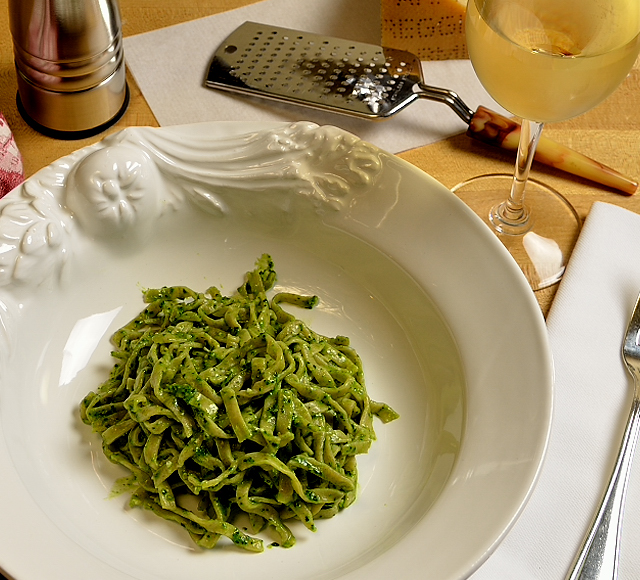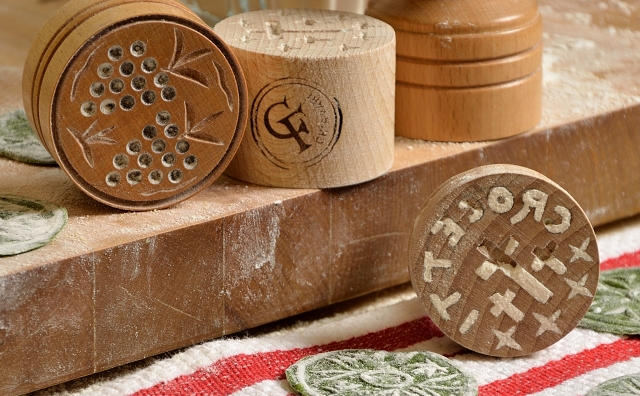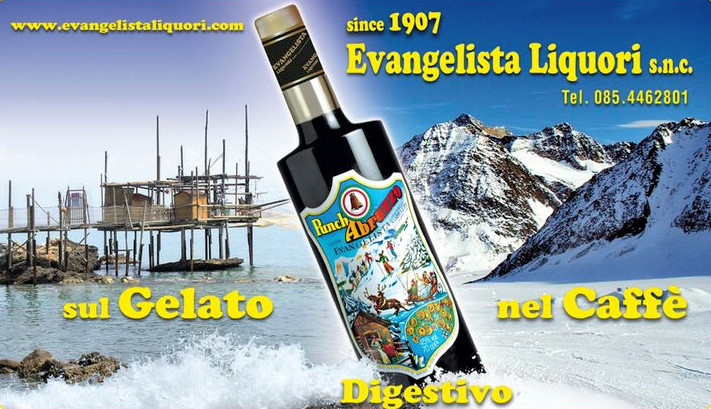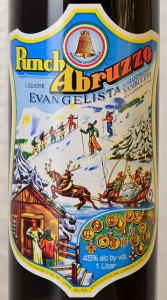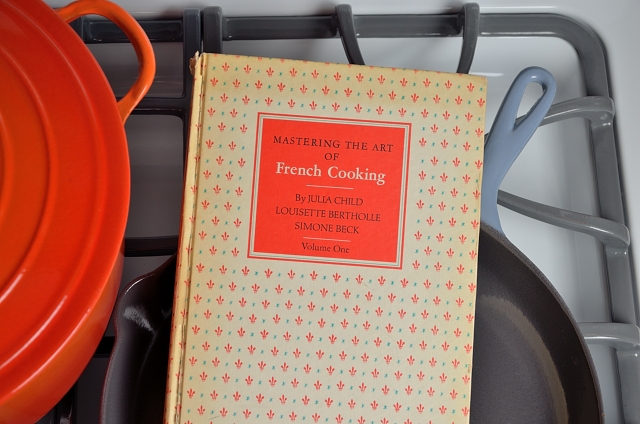To know life one must taste the bitter and the sweet. – Italian proverb

Holiday Season is upon us, and along with the warmth, joy and feelings of brotherly love come huge feasts, and with the feasts, overindulgence. The Italians know how to cure that feeling of having overdone it at the table, and that cure comes in a bottle filled with liquors known as amari (singular, amaro). An essential part of the Italian gustatory experience, these eupeptics have yet to catch on in America. Amaro means bitter, and is not to be confused with Amaretto, the little bitter almond liqueur, nor with Amarone, the magnificent red wine from Italy’s Veneto region. No, amari are in a class by themselves. A large class of liquor numbering in the hundreds, there are even subsets divided by style. Amaro’s origins date back to at least 300 B.C. Originally tonics or elixirs, by medieval times they were integral to alchemists in their attempts to produce gold. It was a no go for the gold, but the elixirs, with their restorative nature and curative powers remain with us to this day. The recipes are always secret, proprietary and closely held by the Italian producers. As digestivi they are traditionally served neat (undiluted, at room temperature), or gently heated on occasion, in the cold winter months. These remarkably complex libations stimulate the appetite and promote the production of digestive acids and enzymes; as the Italians say, they open up the stomach – not exactly dinner table conversation, but digestion is a very big deal to the Italians.
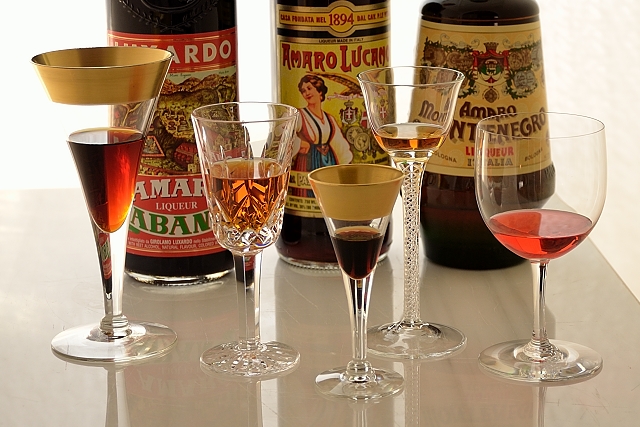
I have already introduced you to Cocchi Americano, Aperol and Campari, all liquors with a distinctly bitter edge. But now we are moving up to the bitter big leagues, and like I said, just in time. Amari are distilled from neutral spirits or wine, even grappa, macerated on an array of ingredients – everything from citrus peel, to the roots of Alpine Yellow Gentian and the bark of the Cinchona tree. Also used are herbs, such as lemon balm and rosemary, spices such as cinnamon and cardamom and even artichokes. Yes, artichokes. Stroll with me into the world of amaro.
My beginning with amaro was less than auspicious. Much less. I was just a little kid, and we were at a big family weekend dinner. After dinner, with everyone well sated, and settling quietly back, Uncle Arunze brought out a bottle filled with brown liquid. He held it up and gestured, offering it to anyone who wished to imbibe. No one moved. No one spoke, lest gesture or utterance be misinterpreted. No one but me, the inquisitive little kid. The adults smiled, and Uncle Arunze poured the tiniest bit of the syrupy brown liquid into a small glass. I swallowed it. All at once. What a jolt. Inauspicious alright. Everyone had quite a laugh at my expense. The bitter alcoholic kick almost knocked me out of my chair. The intensely sugary grasp of the American sweet tooth is not to be underestimated, thus for many these bitter libations can be a very hard sell. Love of amari is learned and cultivated. These are full-bodied creations with flavor nuances that would make a wine nerd wax poetic.
Most range in price from about twenty to thirty dollars, although some such as Amaro Nonino command even higher prices. Many of the bottles and labels are works of art themselves, sleek creations with beautiful gilt script, colorful design, and labels that harken back to produce crates of old.
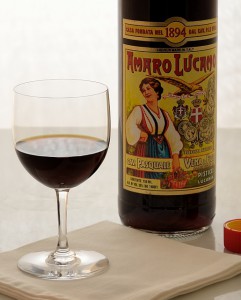
From Basilicata (also known as Lucania) comes Amaro Lucano. The brightly festive label features a pacchiana in traditional dress (farmer in the Campanian dialect) with her basket of herbs and the motto lavoro e onesta (work and honesty). Made from 37 herbs, in the tasting are notes of ginger, licorice and cinnamon. Drink this neat or with sparkling water as an aperitivo. And yes, you can even pour a bit over ice cream.

Amaro Montenegro is the sweetest and perhaps the most accessible of the three shown here with its spice and notes of citrus peel, clove, tea and herbs. Its name honors Italy’s second Queen, Helena of Montenegro. Developed in Bologna in 1885 and popular ever since, it is one of Italy’s best selling amari. Drink it neat as a digestivo, or mixed with sparkling water or ginger ale for a delightful aperitivo.

Amaro Abano, my current favorite, is made with herbs that grow wild in the volcanic hills south of Padova. Sipped slowly after a grand meal, she reveals herself. Initially sweet, followed by the warmth of cinnamon and black pepper, she fills your mouth with cardamom, bitter orange peel and the most remarkable tobacco finish. This is one complex creation. And as with Amaro Montenegro, mixed with sparkling water or ginger ale, this makes one fine aperitivo.
Somehow, when consumed neat on the novitiate’s empty stomach, the bitterness of these elixirs predominates, diminishing the drinking experience. I suggest you taste them on a full stomach. Additionally, their alcoholic content ranges from 16% to 40% and higher, and is nothing to sneeze at. As a beginning taster, with your first sip you may discern only bitter, or distinctly separate bitter and sweet. Sip again and the amaro will seduce you as you begin to taste the multiple part harmony of spice, herbs and fruit. The bitterness will remain a constant, taking its part as a pedal point.
When next you entertain guests with a grand and leisurely meal, consider a selection of amari to close your evening. Bring a few bottles to the table, and sip slowly to savor the delights within. Chances are it will be a new experience for many of your guests, and perhaps you will make a few converts. Bring a bottle of sparkling water along, or a pot of warm water, just in case your guests wish to ease the transition from newbie to convert. Watch as after just a bit, they push the water aside. Slowly sipping these complex libations will quickly become a treasured part of your meals – a time to sit back, reflect on the joy around you and count your blessings while enjoying the good will of your company. Enjoy the wonder that is the art of the distiller of amaro.
Next time you need some of the hair of the dog that bit you, try this instead of a Bloody Mary.
Amaro Montenegro and Fresh Orange Juice
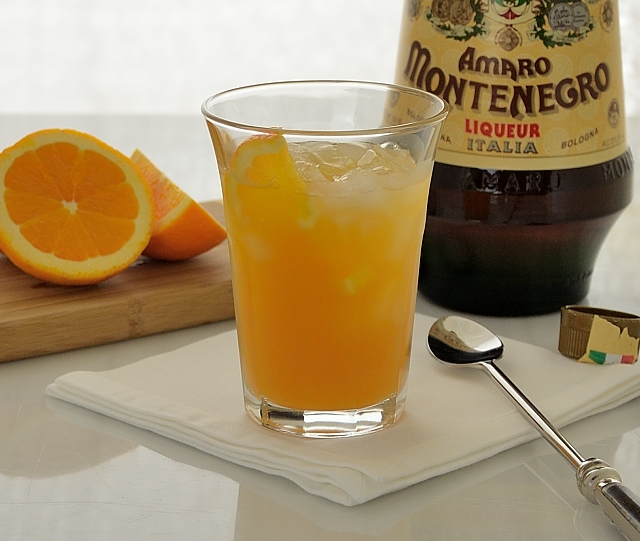
serves 1
1 ounce Amaro Montenegro
2 ounces freshly squeezed orange juice
orange slice for garnish
Pour Amaro Montenegro over crushed ice. Add orange juice and stir with a bar spoon. Garnish with an orange slice. Serve at once.
And for the James Bond fans, just imagine ordering this one – “1 measure of Amaro Montenegro, 2 of fresh orange juice, over crushed ice. Then add a thin slice of orange.”
Bevi responsabilmente!
Note: You can click on any picture for a larger image, and to see a slide show!
I have no affiliation with any product, manufacturer, or site mentioned in this article.
